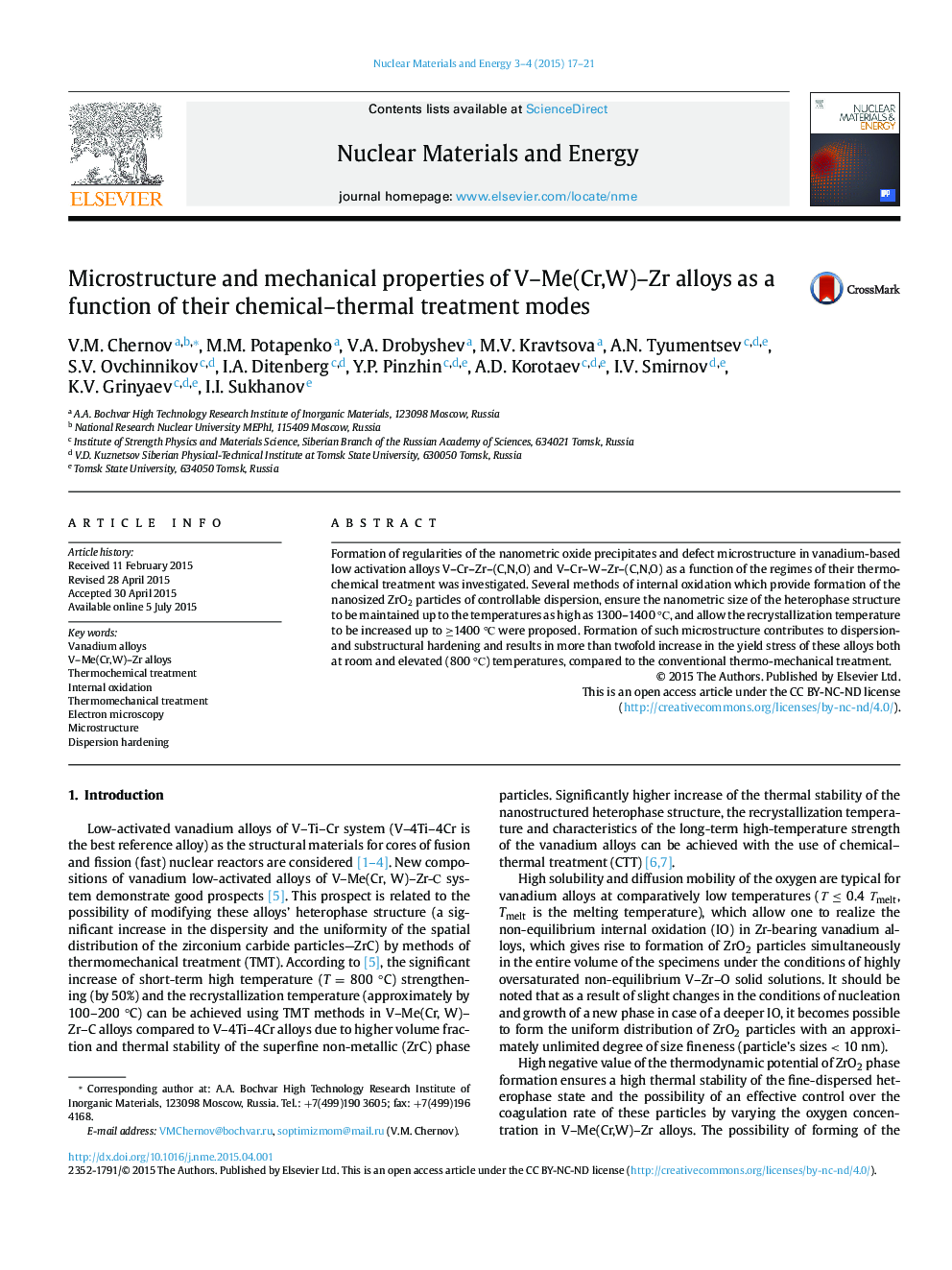| Article ID | Journal | Published Year | Pages | File Type |
|---|---|---|---|---|
| 1590301 | Nuclear Materials and Energy | 2015 | 5 Pages |
•Vanadium alloys of V–Me(Cr,W)–Zr system are proposed and methods of their internal oxidation investigated.•Manufactured vanadium alloys are (wt.%): V–Cr–Zr–(C,N,O) (V–8.75Cr–0.14W–1.17Zr–0.01C–0.02O–0.01N) and V–Cr–W–Zr–(C,N,O) (V–4.23Cr–7.56W–1.69Zr–0.02C–0.02O–0.01N).•Internal oxidation provides the formation of nanosized ZrO2 particles of controllable dispersion.•Optimization results in an essential increase of the recrystallization temperature and the yield stress of vanadium alloys.
Formation of regularities of the nanometric oxide precipitates and defect microstructure in vanadium-based low activation alloys V–Cr–Zr–(C,N,O) and V–Cr–W–Zr–(C,N,O) as a function of the regimes of their thermochemical treatment was investigated. Several methods of internal oxidation which provide formation of the nanosized ZrO2 particles of controllable dispersion, ensure the nanometric size of the heterophase structure to be maintained up to the temperatures as high as 1300–1400 °С, and allow the recrystallization temperature to be increased up to ≥1400 °С were proposed. Formation of such microstructure contributes to dispersion- and substructural hardening and results in more than twofold increase in the yield stress of these alloys both at room and elevated (800 °С) temperatures, compared to the conventional thermo-mechanical treatment.
